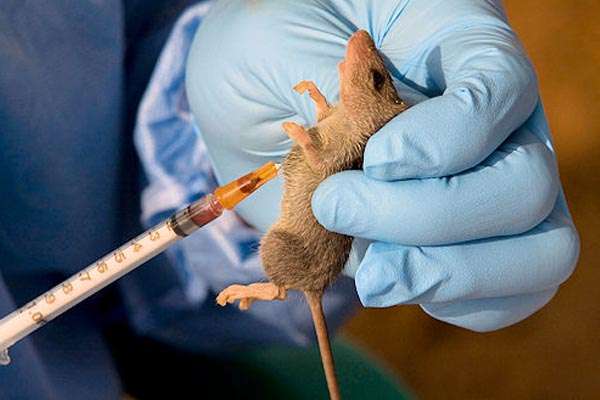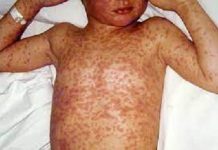
Lassa fever is an acute viral haemorrhagic disease that is endemic in some countries of West Africa, like the Republic of Benin, Ghana, Guinea, Liberia, Mali, Sierra Leone, and Nigeria. West Africa accounts for 100,000 to 300,000 cases, with approximately 5,000 deaths every year. The fatality ratio of the illness has negatively impacted on the population of this region as it is reported that 10 to 16 per cent of patients admitted to hospital in the region have Lassa fever.
The disease was first described in the 1950s and the viral particle was identified in 1969 by three missionary nurses who died in Lassa, Nigeria, after caring for an infected obstetrical patient. Lassa fever is one of the haemorrhagic fever viruses, occurring in West African sub-regions in similar areas as the Ebola virus. Surrounding regions are also at risk because the rodents that transmit the virus are very common throughout West through East Africa.
Tourists to West Africa living in homes or areas of poor sanitation or crowding, as well as healthcare and laboratory professionals serving in healthcare facilities in West Africa, are most at risk. Infection prevention methods are crucial to reducing infection of healthcare workers and spread within health facilities.
The incubation period of Lassa fever ranges from two to 21 days. It is spread to humans through contact with items (food or household) contaminated with infected rodent urine or faeces. Person-to-person transmission may happen after exposure to virus in the blood, tissue, secretions, or excretions of a Lassa virus-infected individual. In hospitals lacking adequate infection control measures, person-to-person infections is possible. Case fatality rate among hospitalised patients with severe cases of Lassa fever is 15 per cent.
With the disease already confirmed in 32 states of the Nigerian federation, health experts are calling for expedited preventive action from all stakeholders towards ensuring that another epidemic and the loss of lives are not allowed. As at week 11 of 2024, 35 new cases had been confirmed in Bauchi, Taraba, Edo, Ondo, Plateau, Benue, Cross River and Ebonyi States.
The Lassa fever outbreak in Nigeria has been on the upward swing, with a cumulative 4,726 cases from week one to 11 of 2024. Unfortunately, 142 deaths have been recorded, with 31 health workers affected in 27 states, including the Federal Capital Territory. The states most affected are Bauchi, Taraba, Edo, Ondo, Plateau, Benue, Cross River, Rivers, Anambra, and Ebonyi States, with 123 Local Government Areas.
Though endemic in Nigeria, a case fertility rate (CFR) of 18.5 per cent has been disturbing and has raised so much concern regarding issues, such as late diagnosis and reporting, which have escalated fatality. Statistically speaking, the number of suspected cases in 2024 has progressively increased (4,726), compared to that reported for the same period in 2023, which was 3, 361.
The signs and symptoms of Lassa fever are generally gradual. They start with fever, general weakness, and malaise. After a few days, headache, sore throat, muscle pain, chest pain, nausea, vomiting, diarrhoea, cough, and abdominal pain may set in. In severe cases, facial swelling, fluid in the lung cavity, bleeding from the mouth, nose, vagina or gastrointestinal tract and low blood pressure may develop. Deafness occurs in 25 per cent of patients who survive the disease. In half of these cases, hearing returns partially after one to three months. Death usually occurs within 14 days of onset in terminal cases. About 80 per cent of people who become infected with Lassa virus have no symptoms.
Without laboratory tests, Lassa fever is difficult to differentiate from other infections common to West Africa. However, specialised laboratories and precautions are required for handling specimens. Laboratory tests include enzyme-linked immunosorbent serologic assays (ELISA) for Lassa IgM and IgG antibodies and Lassa antigen. For definitive testing, the virus can be grown in culture, in seven to 10 days; a reverse transcriptase polymerase chain reaction (RT-PCR) assay is also available but often limited to research. Immunohistochemistry stains performed on tissue specimens can also be used to make a postmortem diagnosis.
One treatment option that has shown great success is the use of Ribavirin, an antiviral drug. It has been used with success in Lassa fever patients. Patients should also receive early supportive care with rehydration and symptomatic treatment.
Primary transmission of the Lassa virus from its host to humans can be prevented by avoiding contact with Mastomys rodents. Similarly, putting food away in rodent-proof containers and keeping the home clean can also help to prevent rodents from entering homes. When caring for patients with Lassa fever, further transmission of the disease through person-to-person contact or nosocomial routes can be avoided by taking preventive precautions against contact with patient’s secretions.













